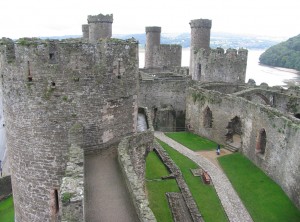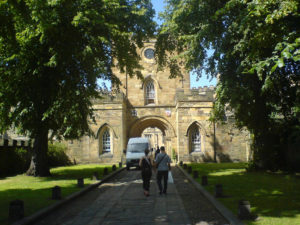Everyone knows about Stonehenge and the Tower of London, and probably also the City of Bath. Though all of these UNESCO World Heritage Sites are well worth a visit they are only the tip of the iceberg when it comes to internationally recognized historic sites located in Great Britain and Northern Ireland. Too many visitors to the UK don’t step off of the well trodden tourist path and come home having seen the same things that their grandparents would have 40 years ago. Take some time to investigate the lesser known UNESCO sites found across Britain and Northern Ireland and you’ll come home having experienced a unique and fascinating holiday unlike anybody else.

Castles and Town Walls of King Edward in Gwynedd, Wales
The castles of Beaumaris and Harlech and fortified complexes of Caernarfon and Conwy in North Wales are some of the best preserved examples of 13th century military fortifications to be found in Europe. Built throughout the reign of Edward I, these monuments are lasting reminders of the colonization of Wales and the military might of the English Empire. Visitors to the castles today will be treated to some of the best preserved Middle Age military architecture in the British Isles. In Conwy one can still walk the circumference of the small city along the top of the stone walls that encircle it, which also provides breathtaking views across the Conwy Estuary and Snowdonia mountains. The landscape of the north of Wales is one of the most dramatic in the UK and with significantly less tourists than the south of the country you may even find you have a castle all to yourself! Web Cottages offer a great range of holiday cottages in North Wales; why not take a few extra days to explore this beautiful area of Wales?

Durham Castle and Cathedral, England
Located a short distance away from each other in the city of Durham in North East England are these combined World Heritage Sites which showcase the Norman influence on this area of the country. The Cathedral was built at the end of the 11th century and today still houses the relics of St Cuthbert and the Venerable Bede. The two sites were granted heritage status in 1986 in recognition of a number of factors, including the architectural importance as well as the political, religious, and cultural significance of the two buildings. Durham Castle and Cathedral are well worth a visit even if you are not a history hound and you’re sure to be left in awe of the beauty that is one of medieval Europe’s most famous cityscapes.
Giant’s Causeway and Causeway Coast, Northern Ireland
Lying at the bottom of a basalt cliff on the northern coast of Northern Ireland you will find one of the most dramatic geological formations to be found in the UK. Here some 40 000 hexagonal black basalt columns rise out of the sea, the sight of which has inspired myths and legends in the area for centuries. The story of Finn McCool, an Irish giant, is the most famous of these tales and is well worth hearing when you visit the Causeway. The Causeway Coastal Path follows along the cliffs above the Antrim Coast and the views are nothing short of extraordinary. Northern Ireland does, however, suffer from the most unpredictable weather so make sure that you are prepared for all four seasons when you visit – and leave the umbrella at home unless you fancy yourself as a present day Mary Poppins!
These are just a few of the great UNESCO World Heritage Sites that are off the beaten track, yet no less fascinating than their popular cousins. www.webcottages.co.uk offer great holiday cottage accommodation throughout the UK and Ireland so you’ll have a nice comfortable place to relax after a day filled with history hunting!
Photo Attribution:
1. Castles and Town Walls – http://www.flickr.com/photos/holcombea/44084918/
2. http://www.flickr.com/photos/fridgeuk/237970105/
3. Giant’s Causeway – http://www.flickr.com/photos/locace/1472839548/

